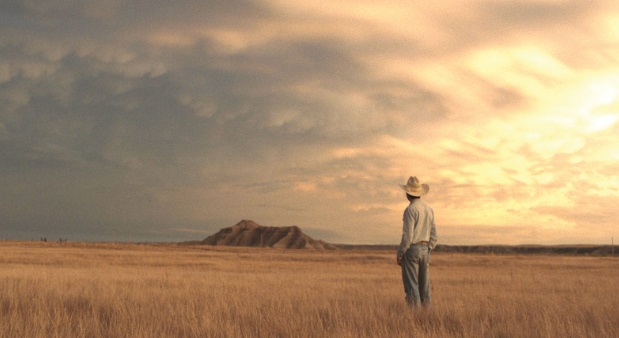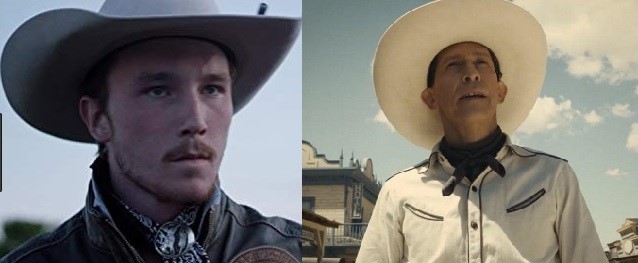The movie Western has been dying for a while, it seems — as a genre it’s certainly not at the level of popularity it had in the first part of the 20th century, or even during the “revisionist” days of the 1960s and 70s. But it continues on just the same, like a cowboy who doesn’t know how fatal his injuries are, and 2018 saw two Westerns with different takes on life and death.
The Ballad of Buster Scruggs is a Coen Brothers movie and thus full of death (their previous movie Hail Caesar! is their only film where no one dies). The anthology structure gives the Coens six opportunities for introducing death in all its forms to their often hapless characters and the brothers take full advantage of this, moving from slapstick brutality in the title story to the sick joke of “Meal Ticket” to the devastating loss of “The Gal Who Got Rattled” to the supernatural terror of “The Mortal Remains.”
It’s their bleakest movie in a catalog full of bleakness, with death coming by accident and malice and sometimes so quietly you don’t even realize it’s there. And this is tied to the genre the Coens choose to explore here. They frequently rely on stories of crime and lawbreaking to drive their plots and that’s here too (particularly in “Near Algodones”) but the West is a place of unclear law, one that is defined by the terminator separating exploration and civilization — the blood meridian. The moral frameworks that Americans fall back on in civilized settings are of little help in creating those settings and that creation is defined by the death it brings. Not just to the “savages” cleared away, but the people doing the clearing.
The use of the Comanche in the movie as antagonists — in a minor way in one segment and in a more crucial way in another — led to some of the heaviest and most predictable knocks on the movie. Some criticism was well-observed — see this roundtable with Native filmmakers — but much was woke whining that ignored the perspective of the stories being told and how the depictions contrasted with the actions of the white settlers and their own savagery. The Coens are making a dark, death-drenched saga of the people who created America and the idea of the West as a thing to be tamed, another point of view would not fit.

At least not in their movie. Chloe Zhao’s The Rider is a counter to the Coen narrative of death and destruction. It’s set in the present, where the Coens have been increasingly reluctant to tread. It’s more languid and observational, and is in fact a quasi-documentary — lead Brady Jandreau (called Brady Blackburn in the film) and his father and sister play themselves re-enacting events that took place in the very recent past. And they are Lakota Sioux, living on a reservation in South Dakota.
Jandreau/Blackburn, unlike nearly everyone in Buster Scruggs, has survived an encounter with death. A horse he was riding in a rodeo fractured his skull and doctors warn Blackburn that any similar accident — or even a minor fall — could be fatal. So Blackburn tries to make a living in other ways, like stocking shelves at the store, but his heart belongs to the horses he trains and rides, and more and more he feels the need to go back to them, whatever the risk.
So Blackburn, too, is haunted by the possibility of death. But the movie ties this to the life that lights his eyes when he watches old footage of past rodeos, or the exquisite interactions as he trains and calms — “breaks” is too binary a word — horses for riding. Scruggs pays attention to the importance of a good steed to its characters, it’s not a coincidence that the one segment where horses (or Tom Waits’ donkey) are barely on display is the one where all the characters are already dead. But in The Rider, horses are the life that comes with connection between two living things and the denial of that connection suggests its own death.
Suggestion isn’t the same as reality, though (as a certain Gal would’ve done well to remember). The Rider builds to a point where Blackburn is poised to choose a moment of life at the rodeo that will be paid for in certain death. But he backs down. The cost is tremendous, and of course he will owe a death at some point anyway. Zhao and Jandreau — two people who are very much not the white men who lead the Coens’ tales — recognize that life and acceptance are things that the West can hold as well. It’s a big country.

